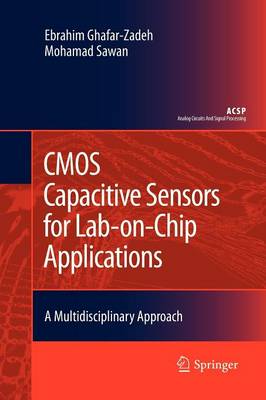(To see other currencies, click on price)
MORE ABOUT THIS BOOK
Main description:
1.1 Overview of Lab-on-Chip Laboratory-on-Chip (LoC) is a multidisciplinary approach used for the miniaturization, integration and automation of biological assays or procedures in analytical chemistry [1-3]. Biology and chemistry are experimental sciences that are continuing to evolve and develop new protocols. Each protocol offers step-by-step laboratory instructions, lists of the necessary equipments and required biological and/or chemical substances [4-7]. A biological or chemical laboratory contains various pieces of equipment used for performing such protocols and, as shown in Fig. 1.1, the engineering aspect of LoC design is aiming to embed all these components in a single chip for single-purpose applications. 1.1.1 Main Objectives of LoC Systems Several clear advantages of this technology over conventional approaches, including portability, full automation, ease of operation, low sample consumption and fast assays time, make LoC suitable for many applications including. 1.1.1.1 Highly Throughput Screening To conduct an experiment, a researcher fills a well with the required biological or chemical analytes and keeps the sample in an incubator for some time to allowing the sample to react properly. Afterwards, any changes can be observed using a microscope. In order to quickly conduct millions of biochemical or pharmacolo- cal tests, the researchers will require an automated highly throughput screening (HTS) [8], comprised of a large array of wells, liquid handling devices (e.g., mic- channel, micropump and microvalves [9-11]), a fully controllable incubator and an integrated sensor array, along with the appropriate readout system.
Contents:
Chapter 1: Introduction
1.1 Overview of Lab-on-Chip (LoC)
1.2 From Macro to Micro Bioassays
1.3 CMOS-Based Lab-on-Chips
1.4 Objectives and Organization of book
Chapter 2: CMOS sensing electrodes
2.1 On-chip microelectrode configurations
2.2 Micromachining gold electrode on CMOS chip
2.3 Electrical model of capacitive sensing electrodes
2.4 Summary
Chapter 3: Capacitive Biochemical Interfaces
3.1 Biochemical capacitive sensing methods
3.2 Design of recognition element: An example for CGM
3.3 Summary
Chapter 4: Capacitive Interface circuits
4.1 LBCS vs. MBCS
4.2 LBCS methods
4.3 Core-CBCM interface circuit
4.4 Core-CBCM sigma-delta capacitive sensor
4.5 Core-CBCM capacitive sensing system
4.6 Summary
Chapter 5: Microfluidic Packaging Techniques
5.1 Microfluidic packaging methods
5.2 Direct-write microfabrication process
5.3 Direct-write microfluidic packaging procedure
5.4 Emerging applications of DWFP
5.5 Summary
Chapter 6: Present and Future Technology of Capacitive Biosensors
6.1 Conventional impedometric and capacitive measurement systems
6.2 Handheld impedance measurement systems
6.3 Towards fully integrated capacitive sensing LoC
6.4 Summary
PRODUCT DETAILS
Publisher: Springer
Publication date: May, 2012
Pages: 158
Weight: 454g
Availability: Available
Subcategories: Biomedical Engineering
Publisher recommends
From the same series











